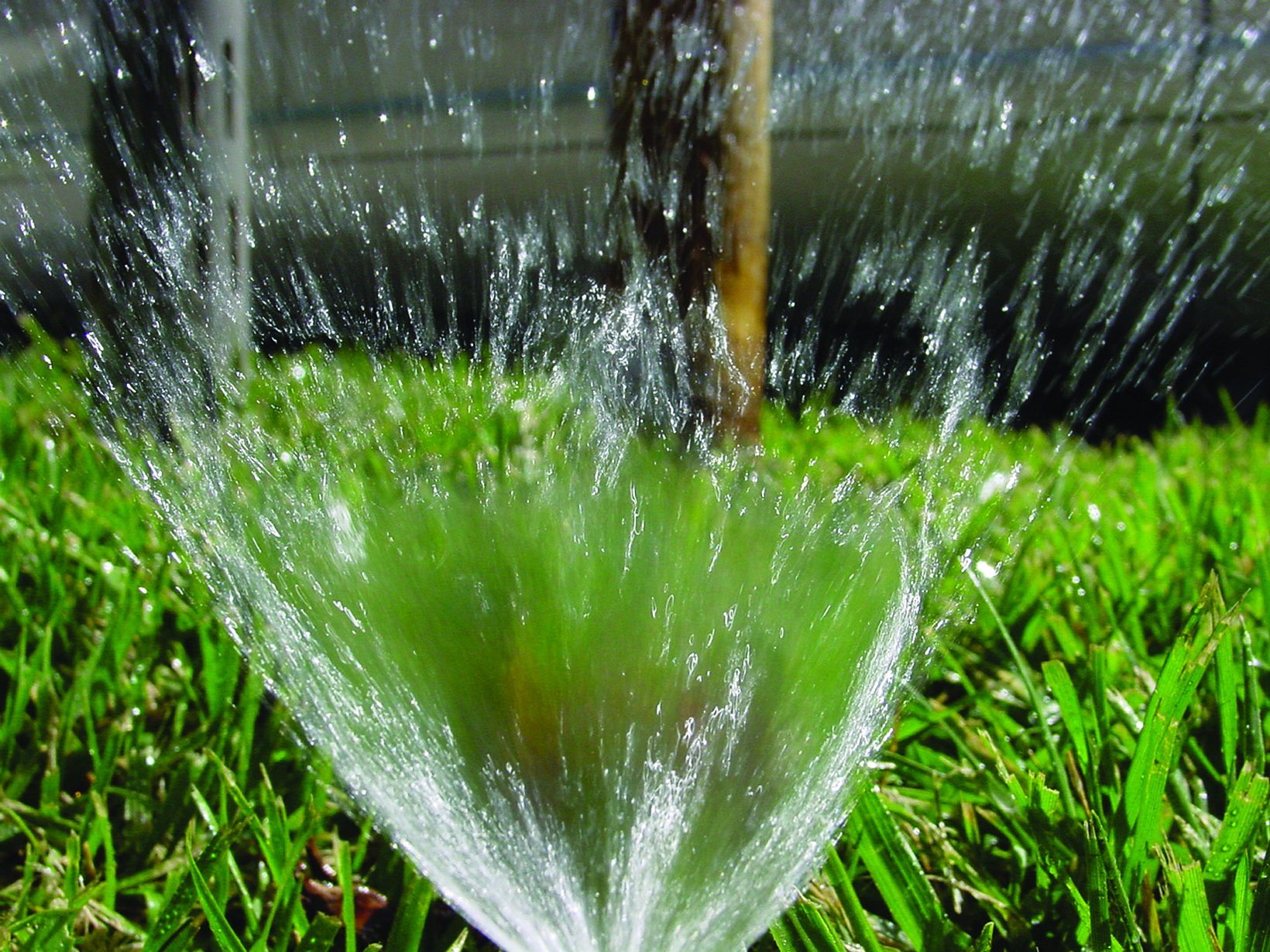A lush, green lawn is a hallmark of a well-maintained home landscape. However, achieving and maintaining such an aesthetic depends on a critical element—an efficient irrigation system. In arid climates or regions with inconsistent rainfall, irrigation systems ensure your lawn thrives throughout the year.
Types of Irrigation Systems
1. Surface Irrigation
- Surface irrigation is one of the oldest methods of watering lawns and gardens. It involves applying water directly to the soil surface, where it spreads across the field by gravity. There are two main types of surface irrigation:
- Flood Irrigation: Water is applied uniformly across the field by flooding the surface. This method is cost-effective but can result in uneven water distribution and excessive runoff.
- Furrow Irrigation: Water flows in furrows or channels created between rows of plants. This technique is more efficient than flood irrigation and provides better control over water distribution, but it requires regular maintenance to keep furrows in good condition.
2. Sprinkler Irrigation
Sprinkler irrigation systems mimic natural rainfall by distributing water through a network of pipes via sprinkler heads that spray water into the air. There are different sprinkler systems based on your lawn’s needs:
- Rotary Sprinklers: These sprinkler heads rotate, delivering water to a large area. They are suitable for large lawns and provide even coverage with adjustable spray patterns.
- Oscillating Sprinklers: These sprinklers move back and forth, making them ideal for rectangular lawns. They mimic gentle rain, reducing soil erosion.
- Fixed Spray Sprinklers: These types of sprinklers offer localized water distribution, making them suitable for small plants or flowerbeds.
3. Drip Irrigation
Drip irrigation systems provide water directly to the root zone of plants through a network of tubes and emitters. This method is highly water-efficient, as it minimizes evaporation and runoff. Drip irrigation is perfect for garden beds, shrubs, and trees, and it conserves water by ensuring only the root zone receives moisture.
4. Subsurface Irrigation
Subsurface irrigation involves burying pipes below the soil surface, delivering water directly to plants’ root zones. This system significantly reduces evaporation and runoff, ensuring maximum water use efficiency. It is beneficial for lawns, vegetable gardens, and perennial plants.
5. Automated Irrigation Systems
Automated irrigation systems can incorporate any of the above methods and are controlled by timers or sensors that manage water distribution based on preset schedules or environmental conditions. Smart irrigation controllers can adjust watering schedules based on weather forecasts, ensuring efficient water use. They are ideal for homeowners seeking convenience and optimized water management.
Key Components of Irrigation Systems
1. Water Source
The water source is the origin of water for your irrigation system. It can be a municipal water supply, a well, a pond, or a rainwater harvesting system. Your choice will depend on availability, cost, and local regulations.
2. Pump
A pump is necessary for certain irrigation systems, particularly if the water source is from a well or pond. It ensures adequate water pressure for efficient distribution.
3. Pipes
Pipes transport water from the source to various parts of your lawn or garden. They can be made from different materials such as PVC, polyethylene, or metal, each with its advantages and suitability based on the irrigation system type.
4. Valves
Valves control the flow of water through your irrigation system. They can be manual or automated, allowing you to regulate water distribution easily. Solenoid valves are commonly used in automated systems because they are compatible with irrigation controllers.
5. Sprinkler Heads and Emitters
Sprinkler heads and emitters are the endpoints of your irrigation system, dispersing water into your lawn or garden. The choice of sprinkler heads or emitters depends on the irrigation method and specific watering needs.
6. Irrigation Controller
Irrigation controllers automate your system, allowing you to set watering schedules and durations. Smart controllers can connect to weather stations or sensors to optimize watering based on real-time data, ensuring efficient water use and plant health.
Installing an Irrigation System
Installing a home irrigation system requires careful planning and execution to ensure efficient water use and optimal plant health. Follow these steps to achieve a successful installation.
Step 1: Planning and Design
Start by assessing your landscape and irrigation needs. Consider factors like the type of plants, soil type, and climate. Create a detailed sketch of your lawn or garden, marking the areas that need irrigation. Identify the water source and plan the layout of pipes, valves, and sprinkler heads or emitters.
Step 2: Selecting the Right Components
Choose the appropriate irrigation components based on your needs and budget. Ensure compatibility between different parts, such as controllers, valves, and sprinkler heads or emitters. Opt for high-quality materials to ensure durability and efficiency.
Step 3: Preparing the Site
Clear the area of any debris, rocks, or obstacles that may interfere with the installation. Ensure the soil is adequately prepared for trenching if necessary.
Step 4: Installing Pipes
Lay out the mainline pipes from the water source to the designated irrigation zones. Dig trenches to bury the pipes, ensuring they are at the correct depth to prevent damage from surface activities and freezing temperatures. Assemble the pipes, ensuring secure connections with proper fittings.
Step 5: Installing Valves and Controllers
Install valves at key points to control water flow to different zones. Ensure they are easily accessible for maintenance. Connect the valves to the irrigation controller, following the manufacturer’s instructions for wiring and programming.
Step 6: Installing Sprinkler Heads or Emitters
Position sprinkler heads or emitters based on your design, ensuring proper spacing for even water distribution. Adjust the spray patterns or flow rates according to your plants’ needs.
Step 7: Testing and Adjustments
Turn on the system and check for any leaks, clogs, or malfunctions. Adjust the sprinkler heads or emitters for optimal coverage and water distribution. Program the irrigation controller to set appropriate watering schedules based on your landscape’s requirements.
Step 8: Maintenance
Regular maintenance is crucial for the longevity and efficiency of your irrigation system. Check for leaks, clean filters, and adjust sprinkler heads or emitters as needed. If you live in a region with freezing temperatures, winterize your system to prevent damage.
Why Choose Elements Lawn & Landscape?
At Elements Lawn & Landscape, we understand the importance of a thriving, well-maintained lawn. With over 20 years of experience in the Austin, TX area, we are committed to “Keep Austin Green” by providing top-notch landscaping services, including installing and maintaining home irrigation systems. Here are a few reasons to choose us:
Expertise and Experience
Our landscape experts have extensive knowledge and experience in designing, installing, and maintaining various irrigation systems. We ensure that your lawn receives the adequate amount of water it needs to flourish.
Customized Solutions
We tailor our services to meet your specific needs. Whether you need a simple sprinkler system for a small lawn or a comprehensive drip irrigation system for a large garden, we customize our solutions to ensure efficiency and effectiveness.
Quality and Durability
We use high-quality materials and components to ensure the durability and reliability of your irrigation system. Our commitment to quality ensures that your investment will provide long-term benefits.
Comprehensive Services
We offer a full range of landscaping services, from planning and design to installation and maintenance. Our comprehensive approach ensures that every aspect of your lawn care is handled with professionalism and attention to detail.
Outstanding Customer Service
At Elements Lawn & Landscape, customer satisfaction is our top priority. We work hard so you don’t have to, providing unmatched value and customer service to help turn your landscaping dreams into reality.
Transform Your Lawn with Elements Lawn & Landscape
Are you ready to enhance the health and beauty of your lawn with an efficient home irrigation system? Let Elements Lawn & Landscape handle all your irrigation needs. From planning and installation to maintenance, we’ve got you covered. Our expert team will ensure your lawn remains lush and vibrant all year round.
Contact us today and discover the Elements Lawn & Landscape difference. Learn more about our services and schedule a consultation. Transform your lawn with Elements Lawn & Landscape, and let us help you keep Austin green!


